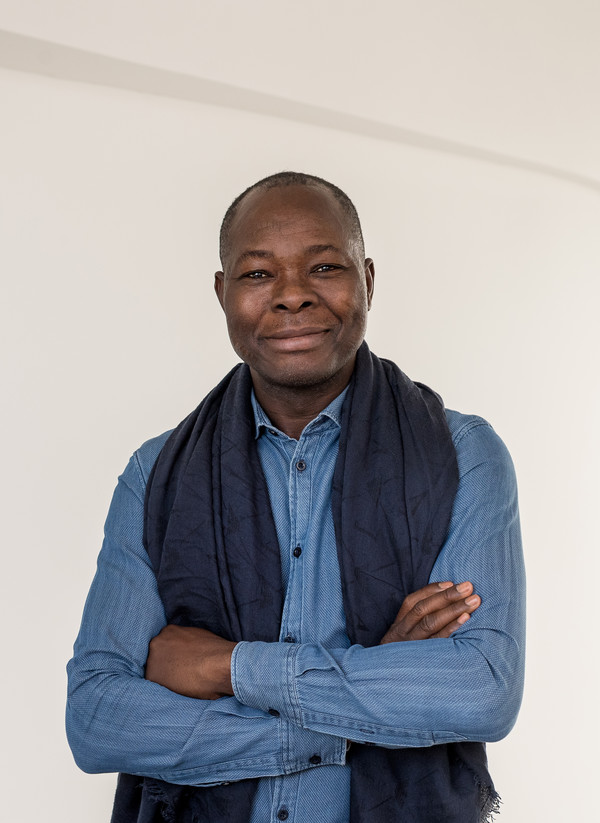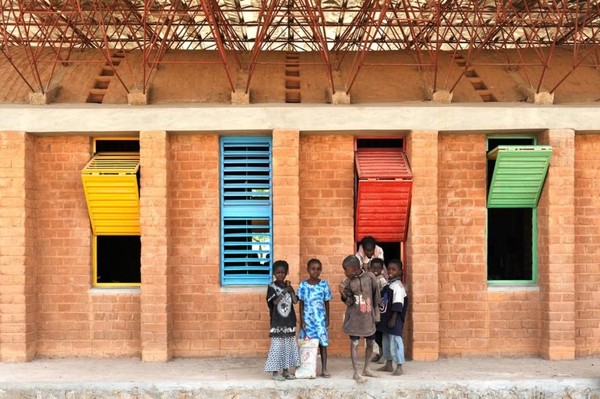
“I think a building that relates to elements such as light, openings, and color of materiality, gives more to a little child than a room where you can teach the alphabet.” Diébédo Francis Kéré, an architect from Burkina Faso, Africa, designs and constructs buildings that are inherently sustainable and innovative in their own ways while working with local communities. His steady focus from the international community over the past decade has earned him the honor of receiving The Pritzker Architecture Prize in 2022. How could Kéré, a native of Burkina Faso, one of the poorest countries in the world, create hope and a future through architecture? Find out about his life and beliefs with CAH.
Kéré was born on April 10, 1965, in the village of Gando, Burkina Faso, as the eldest son of the village chief. The distinctive radial tribal scarification marks on his face serve as a reminder of his privileged status within the community. At that time, Burkina Faso received only the lowest level of education in the world, and his environment lacked infrastructure. Although there were no kindergartens, he spent his childhood in a close-knit local community where everyone lived like family. Kéré credited his initial sense of architecture to working with the village people to build homes while growing up with his family in that setting. As the chief's son, Kéré eventually became the first in his village to attend school. The classrooms in Tenkodogo, some distance from his hometown, were constructed with cement blocks, and he had to endure extreme heat alongside over 100 classmates. It was during this time that Kéré made a commitment to himself to one day improve the conditions of that school. He pursued further studies in carpentry and woodworking and enrolled at the Technische Universität Berlin in Germany. Eventually, he even received advanced degrees in architecture.
Although his body was far from hometown, Kéré's heart remained there. Kéré recognized his responsibility as the son of a village chief who had received the privilege of an advanced education. With the aim of giving back to his community, Kéré founded the ‘Schulbausteine für Gando e.V.’ (school building blocks for Gando) to promote children's rights through fundraising and building. His first building, the Gando Primary School, built in 2001, was built by and for Gando villagers. Kéré was able to work with the local community to create a building optimized for the village environment using indigenous materials. The success of the Gando Primary School earned him the Aga Khan Award for Architecture in 2004. In addition, Kéré expanded his vision to encompass secondary and higher education, as well as healthcare, facilities. Kéré's work area has extended beyond his home village, to the rest of Burkina Faso, and then even to Kenya, Mozambique, Uganda, and other countries where infrastructure is very scarce. His African architecture not only provided educational opportunities for African children but also offered job opportunities for adults, equipping them with occupational skills for sustainable livelihoods. These efforts by Kéré went beyond temporary impact, fostering the long-term revitalization of African communities, ensuring their continued growth and self-sufficiency.
Such an accomplished architect, Kéré consistently strives to uphold his beliefs in nearly all of his architectural endeavors – community, local friendliness, and sustainability. Having spent his formative years in a tight-knit local community, Kéré has always put communal values first. He said in an interview with Arch Daily. "As soon as you have your first building, people start to realize then that ‘we could do that!’ …The ‘we’, the sense of ‘us’, works as an identity catalyst." His desire to use his talents and abilities as an architect for the betterment of the local community is closely intertwined with his sense of community spirit. He remarked, "I considered my work a private task, a duty to this community... We have to fight to create the quality that we need to improve people’s lives." Furthermore, in his work where the environment is often characterized by a lack of infrastructure, he had to prioritize 'local friendliness.' He used clay and other materials commonly available in his village. Moreover, considering the limited access to electricity, Kéré had to design ways for buildings to maintain lower temperatures without relying on electricity. He anticipated airflow so that the building could breathe and ventilate naturally. By installing canopies in the classrooms, he created a natural ventilation system that allowed hot air to escape the building easily. Now and in the future, when even wealthy countries must not abuse electricity, such power-saving strategies like his will be widely used for energy efficiency, not only in Africa but also the rest of the world. Lastly, his belief in a 'sustainable vision' is aimed at the enduring revival of Africa, not just something temporary. Most young people who want to succeed in Africa, as Kéré did, leave their homeland and look for work elsewhere. While this approach can help individual youth succeed, it can also deprive the African region of human resources. In this context, Kéré's infrastructure construction industry is contributing to the creation of suitable jobs for young people, ensuring that African nations not lose their young talents.
Finally, in 2022, he was honored with the Pritzker Architecture Prize, often referred to as the "Nobel Prize of architecture." However, he responded to this global focus and high recognition in a very humble way. He stated, "If you think globally, it's a little community. However, when you put it in perspective and realize that people are moving through the desert to adventure in little boats to go to Europe, you finally understand the meaning of this little drop in the desert of sand: it's hope." Despite a challenging educational environment, Kéré became an outstanding architect and re-invested his talents into the local community. If you want to learn more about the buildings that embody his hope and vision for the future, why don’t you visit Kéré's website?


